Are you looking to modify an existing contract but unsure where to start? Revising agreements can often feel overwhelming, but having a clear and concise template can make the process smoother. In this article, we'll walk you through a practical letter template for a contract amendment agreement, ensuring that all parties can express their needs while maintaining a professional tone. So, let's dive in and simplify the contract amendment process together!

Contract Title and Parties Involved
The contract amendment agreement serves to officially modify existing contractual terms between involved parties, such as Company A and Company B, identified by their registered business addresses. This document may specify the contract title, for instance, "Service Agreement" dated January 15, 2022, which outlines previous obligations and responsibilities stipulated in the original contract. Important details include the amendment date, signatures from both parties, and specific clauses to be modified, added, or removed, ensuring legal compliance under applicable law within the governing jurisdiction.
Effective Date of Amendment
Contract amendment agreements serve to modify existing terms in a legal document, outlining changes or updates needed. The effective date of amendment indicates when the changes or modifications will take effect, typically specified as a clear date (e.g., January 1, 2024) or tied to an event. Careful documentation of this date is crucial for maintaining a clear timeline of obligations and responsibilities for all parties involved. For instance, if the amendment involves adjustments to payment terms or project deadlines, clarity on this effective date prevents confusion or disputes. Each party's acceptance and acknowledgment of this date should be explicitly documented to uphold the integrity of the contract amendment process.
Sections and Clauses Amended
A contract amendment agreement outlines specific sections and clauses of the original contract that are being changed. For instance, the first section might include the "Payment Terms" clause, detailing the revised payment schedule, such as changing a payment from $1,000 to $1,500 due on the 15th of each month instead of the previous 30th. The next section could address "Delivery Timeline," specifying a new delivery date of June 1, 2024, instead of December 15, 2023, impacting logistical planning. Additionally, a revised "Termination Clause" could stipulate that either party can terminate the agreement with a 30-day written notice, an adjustment from the prior 60-day requirement. Each amendment must be clear, concise, and formally documented to ensure both parties understand the new terms established within this amended agreement.
Reason for Amendment
The primary motivation for the contract amendment involves adjustments to the financial terms stipulated in the original agreement. This may include modifications to payment schedules or amounts due to changes in project scope or funding availability. Additionally, clarifications regarding deliverables and timelines will ensure that all parties maintain alignment on expectations. These amendments aim to enhance cooperation and mitigate potential disputes, facilitating a smoother workflow and ensuring the successful completion of contracted obligations.
Signatures and Witnesses
A contract amendment agreement requires clear documentation of signatures and witnesses to ensure legality and enforceability. The signature section at the end of the document must provide space for all parties involved in the contract to sign and date the amendment, including their printed names beneath the signatures for clarity. For example, if company XYZ Corp is amending a service agreement with John Doe, both parties' signatures must be included along with the date of signing. Additionally, witness signatures may be necessary, particularly for agreements involving significant obligations or financial transactions, to confirm the authenticity of the signatures. Witnesses must provide their names, addresses, and signatures, often requiring them to be impartial third parties. Legal requirements and practices may vary by jurisdiction, therefore consulting local laws can provide further guidance.

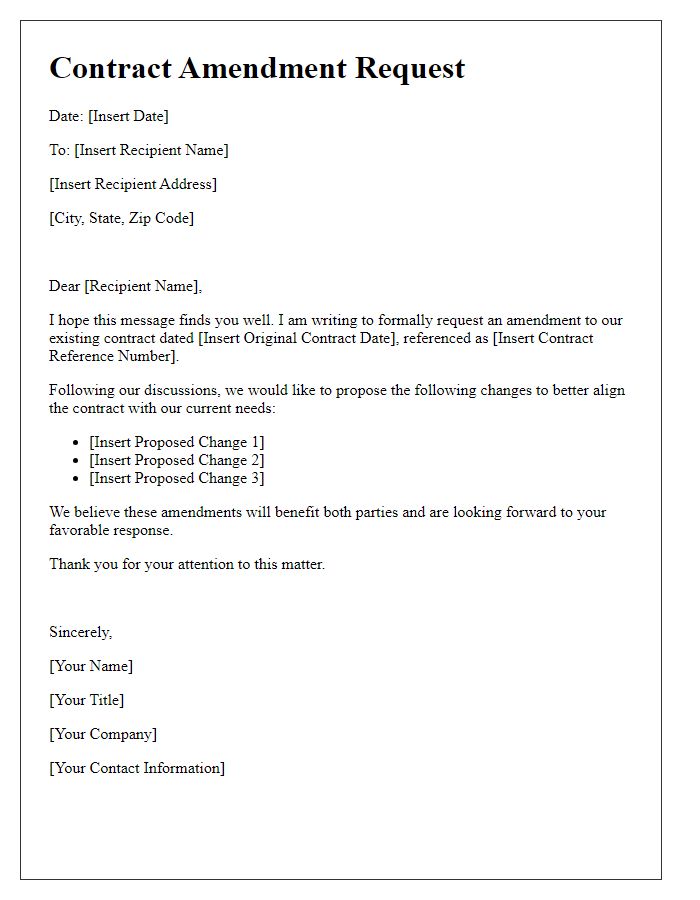
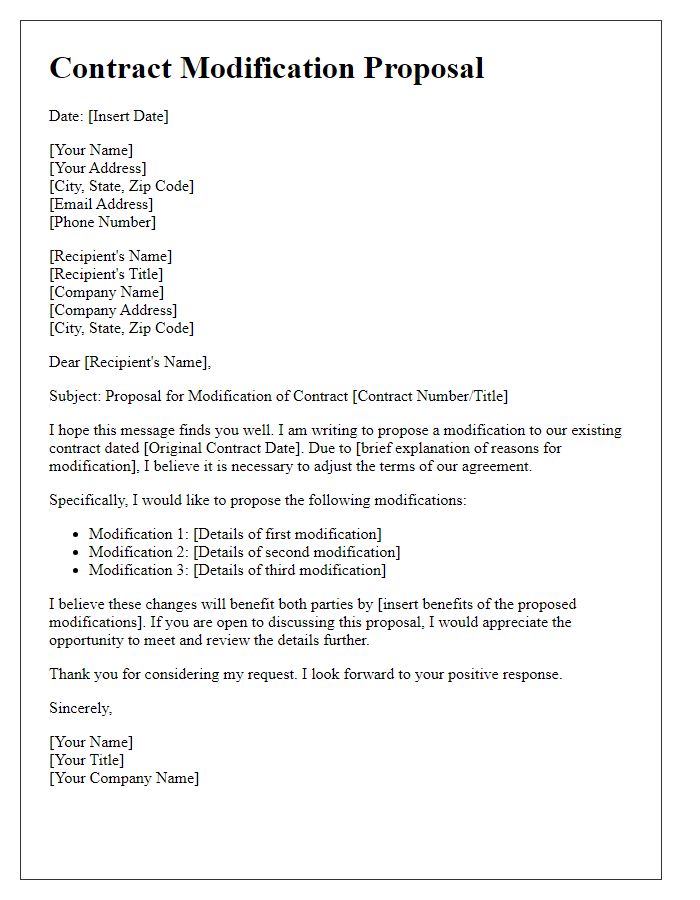
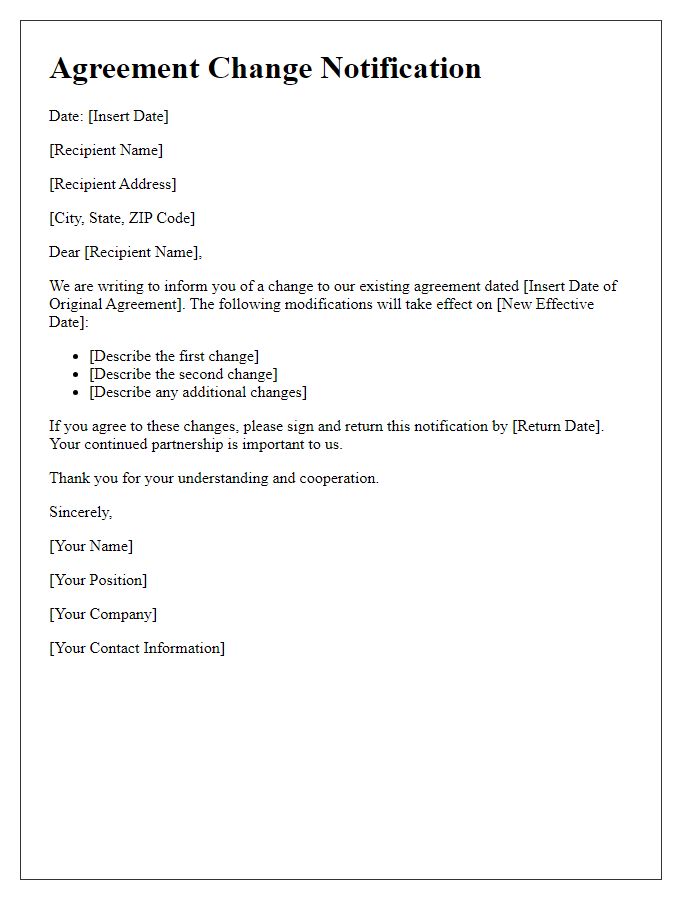
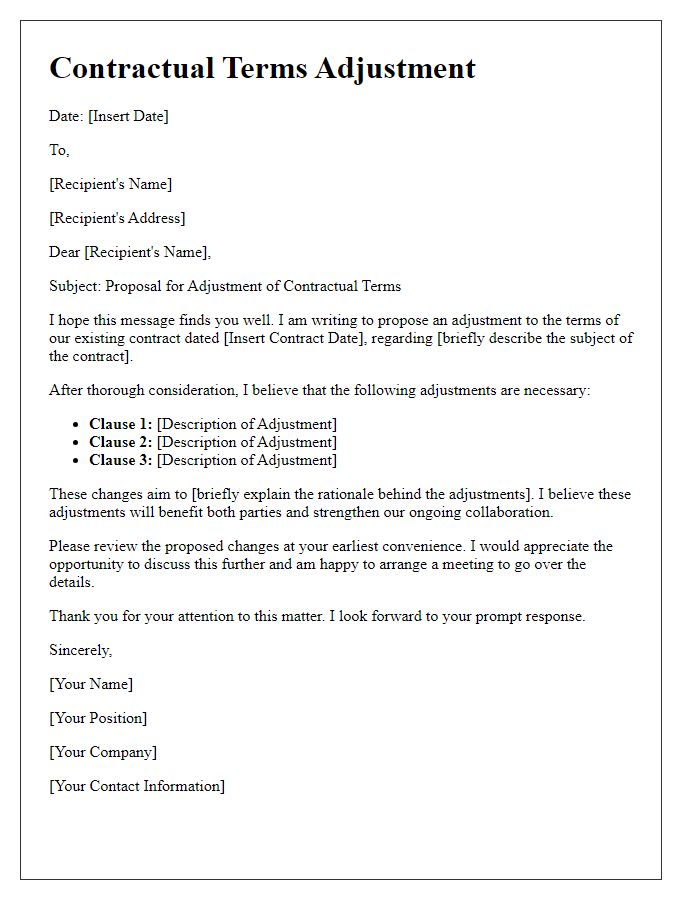
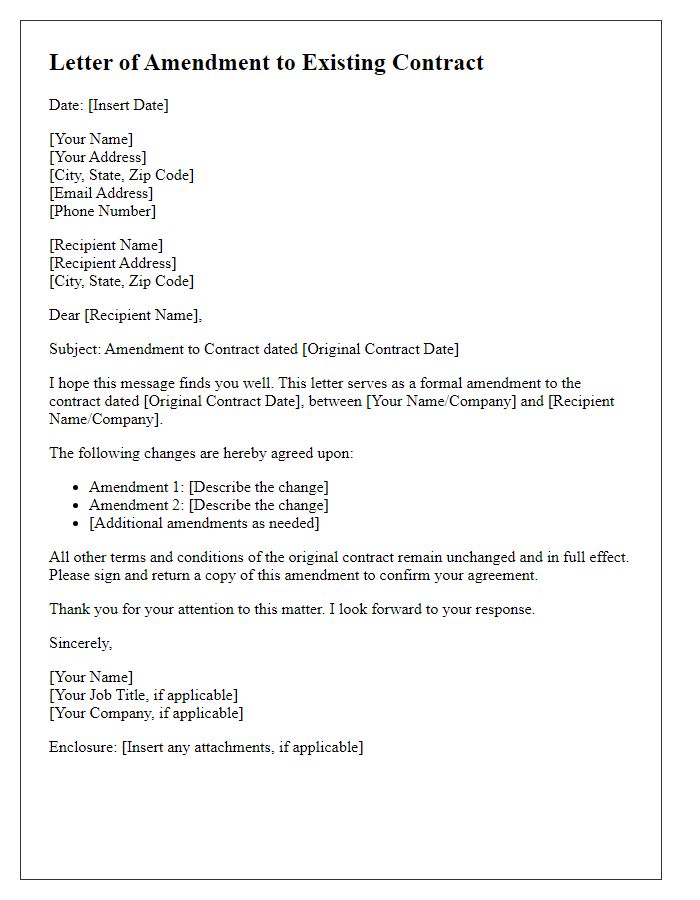
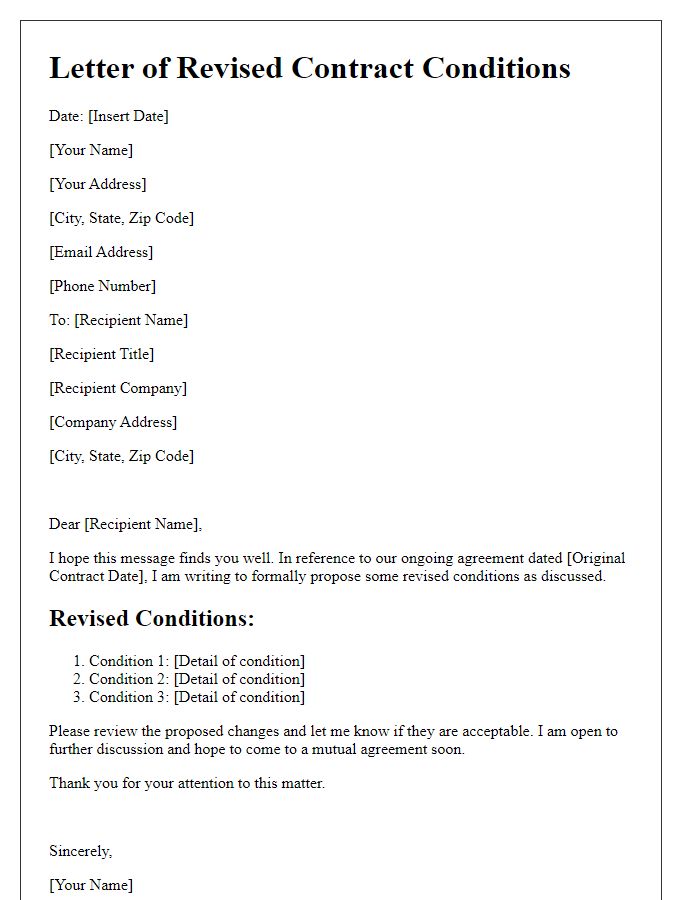
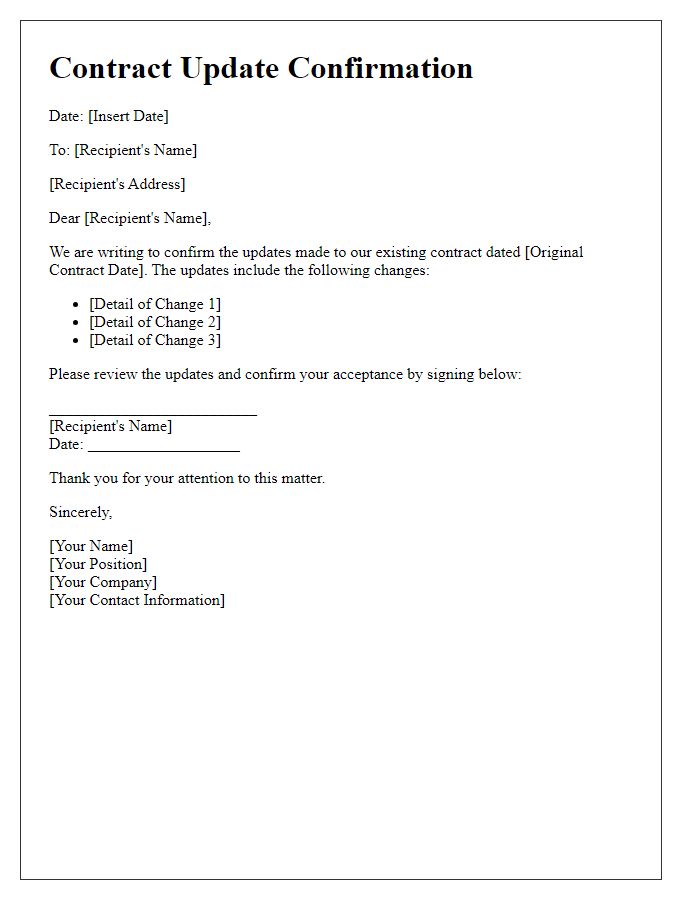
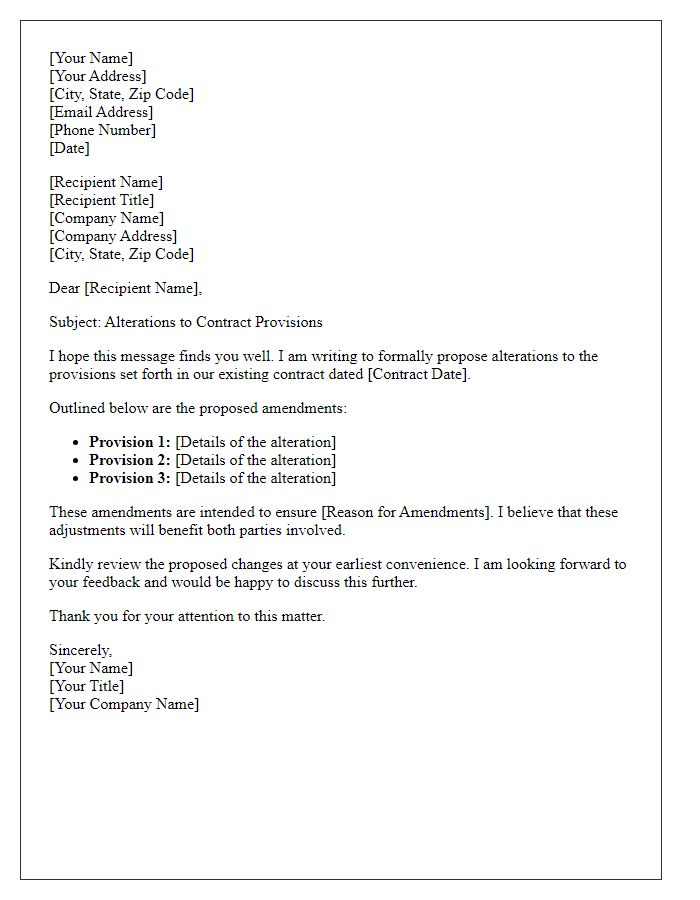
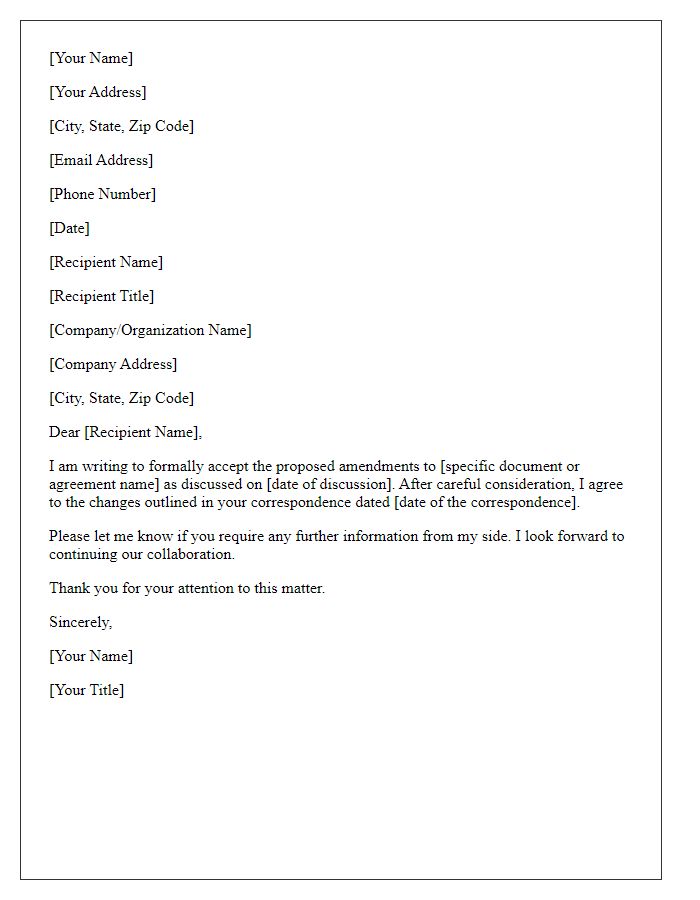
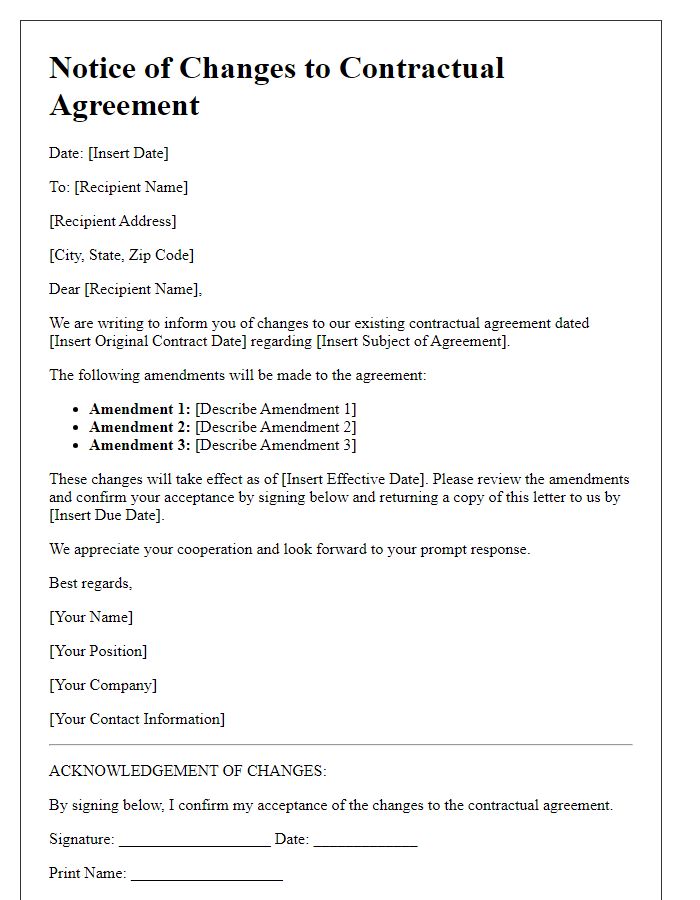


Comments